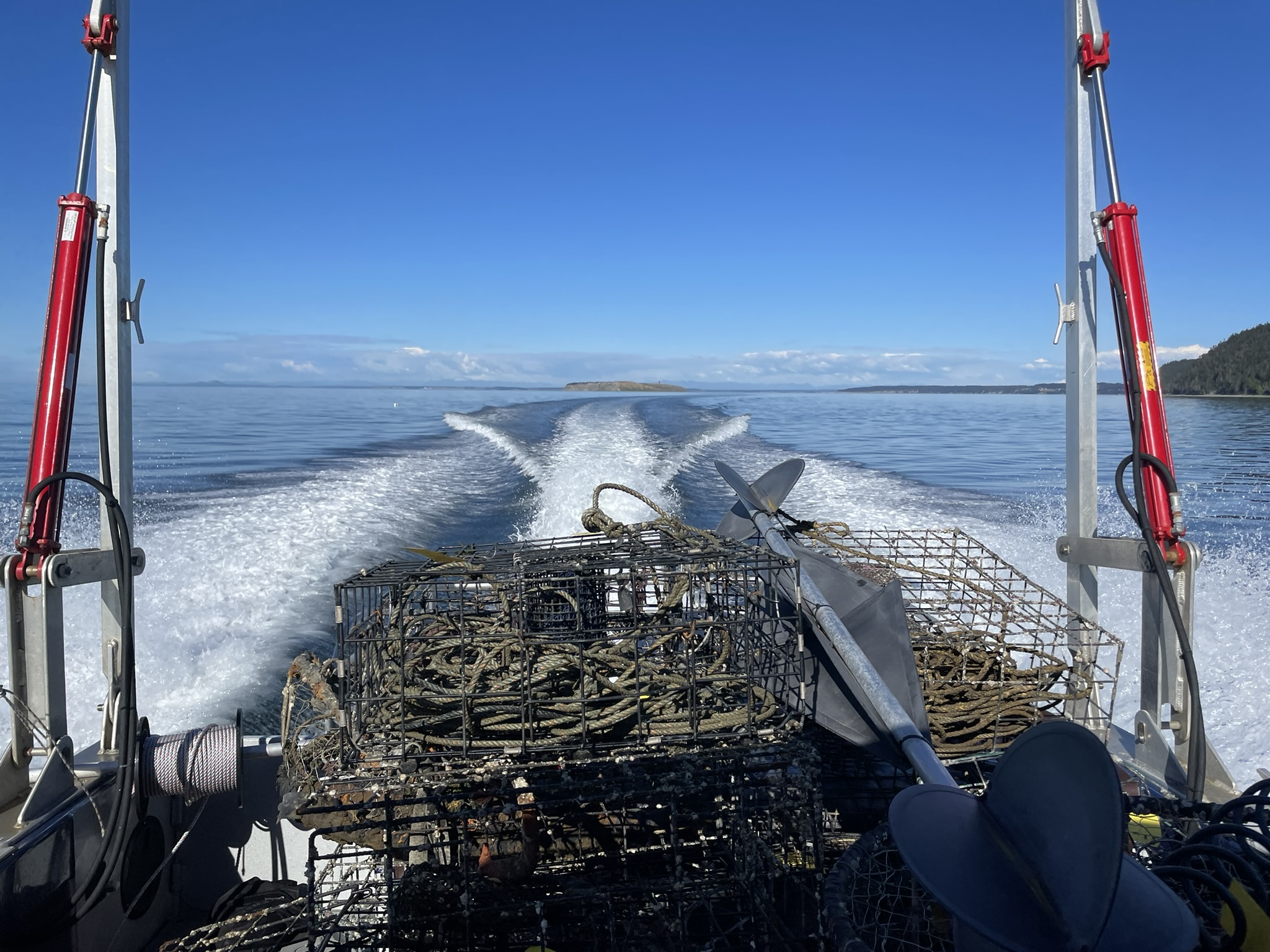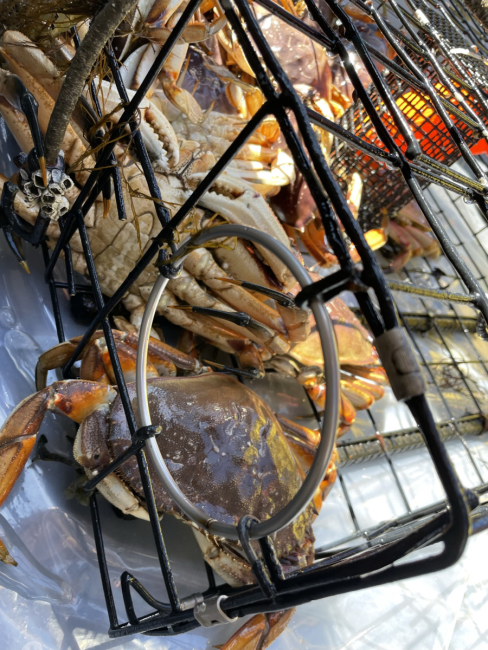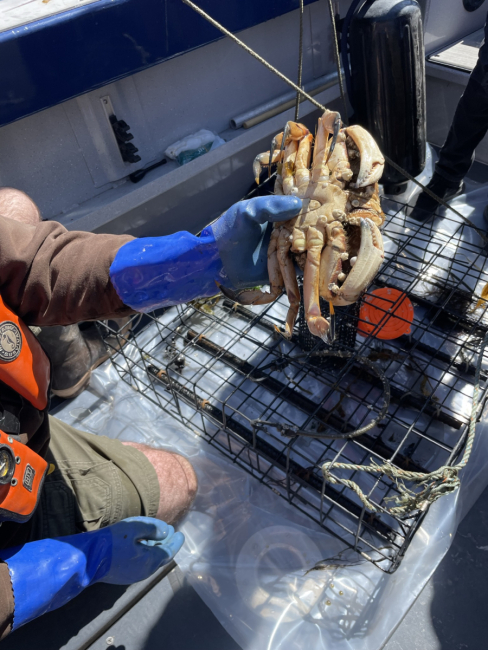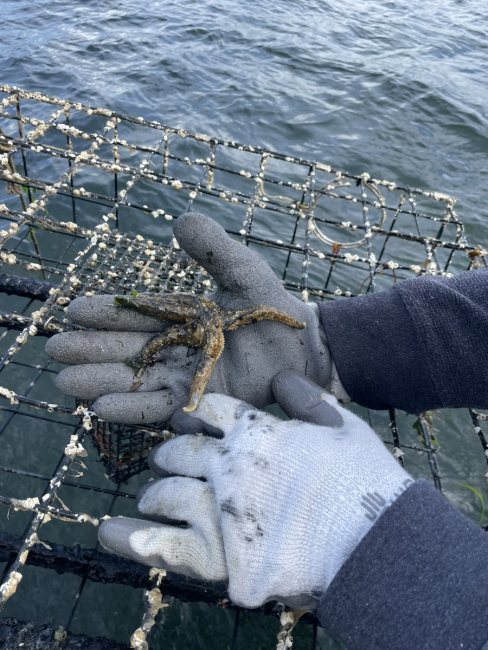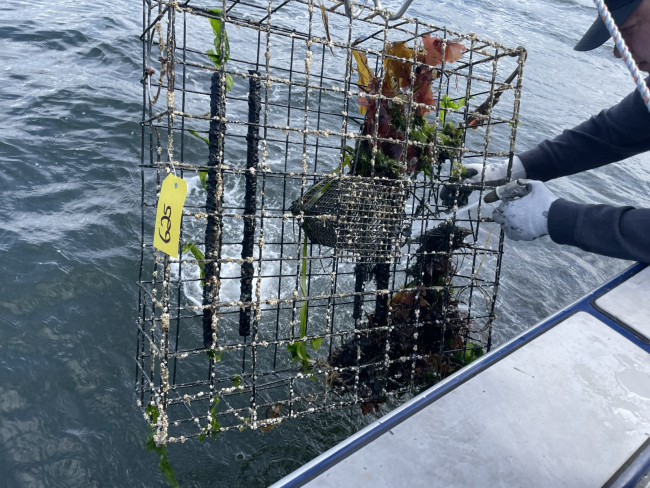Guest Blog By: Kara Cardinal, Innerspace Exploration Team
Dungeness crab (Metacarcinus magister) are a vital asset to the North Olympic Peninsula, ecologically, economically, and culturally. The S’Klallam (“Strong People”) tribes have depended on Dungeness Crab for generations for food, wisdom and celebration. They were named by non-Native people after the town of Dungeness in Clallam County, and have been harvested commercially and recreationally for well over a hundred years. The Dungeness crab fishery in this area is also one of Washington's most economically important fisheries.
A side-effect of this beloved Dungeness crab fishery is gear loss and the subsequent bycatch of sea life, also known as “ghost fishing.” Ghost fishing occurs when a piece of fishing gear, in this case, a crab pot, continues to trap crabs when it is no longer being fished. Those trapped crabs cannot escape and can die as a result.
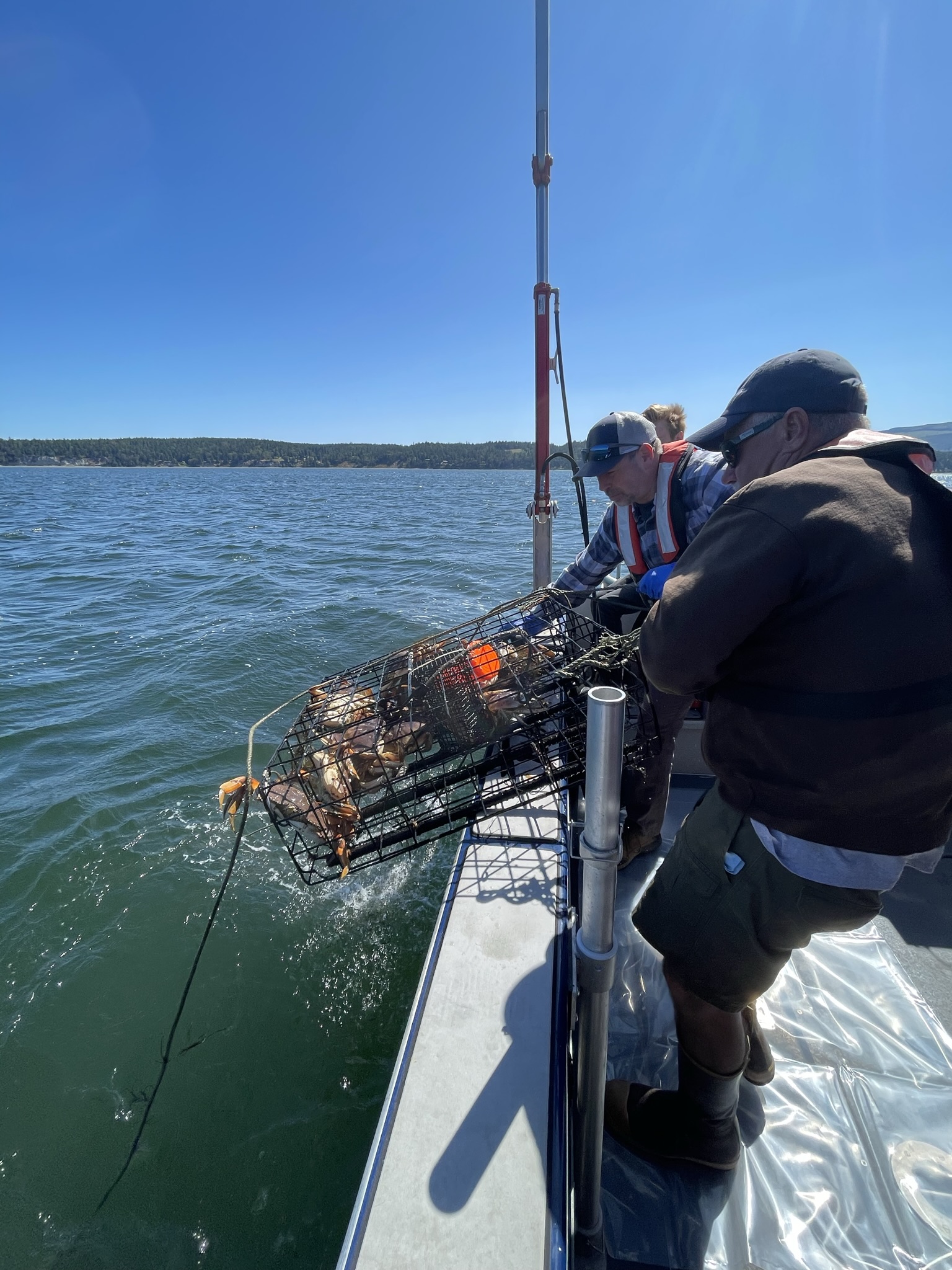
In Washington State, an estimated 120,000 tribal and non-tribal crab pots are deployed annually, with an approximate loss rate of up to 10% each year. Although Washington has regulations that require the design and construction of crab pots to include escape rings, which minimize ghost fishing, lost crab pots are still responsible for unnecessary crab mortality, damage to habitats, and entanglement and mortality of marine mammals and other important species.
In response, the Innerspace Exploration Team partnered with the NOAA Marine Debris Program, Clallam and Jefferson County Marine Resources Committees, the Fiero Marine Science Center, the Jamestown S’Klallam Tribe, the Lower Elwha Klallam Tribe, the Port Gamble S’Klallam Tribe, the North Olympic Chapter of the Puget Sound Anglers, and many other community partners on the Sequim & Discovery Bay Derelict Crab Pot Removal project. This effort focused on documenting and removing pots from both Discovery and Sequim Bays.
Removal efforts took place in the spring of 2023 and 2024. In total 449 crab pots were removed. 80 of those were returned or repurposed while the other 369 crab pots were recycled. However, locating and later removing the traps took time and effort from many different groups.
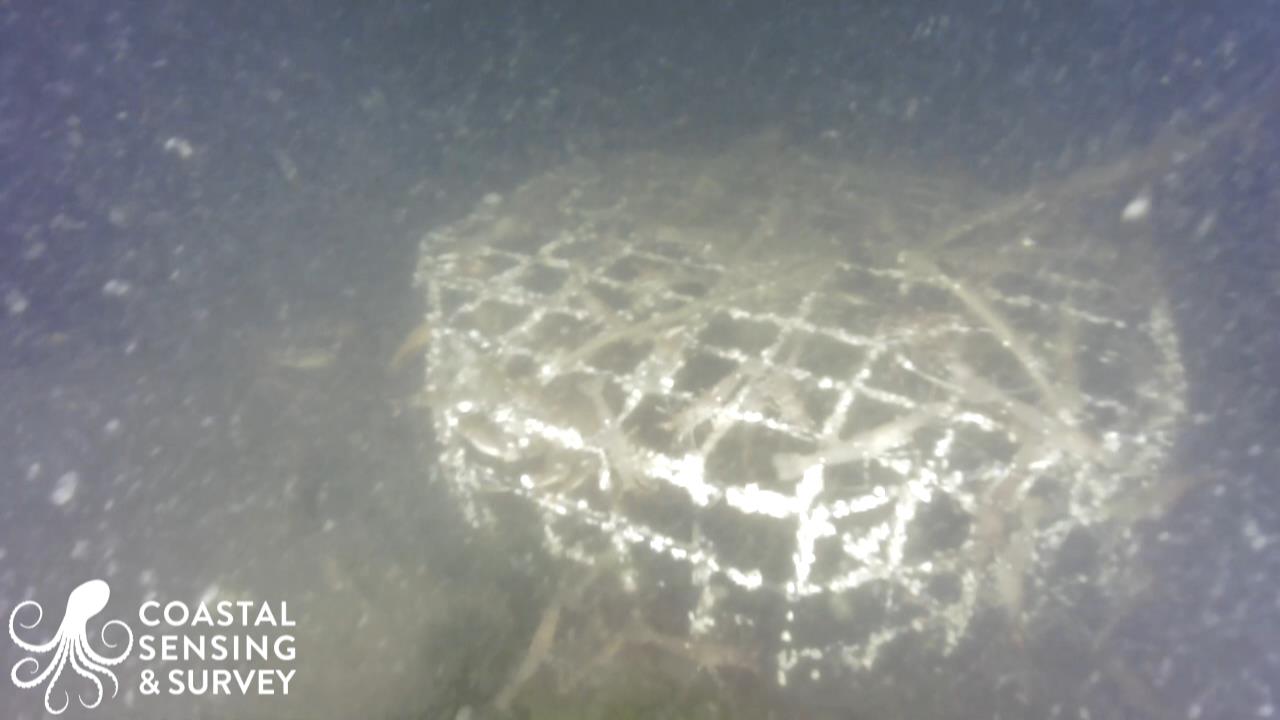
First, the bays were surveyed for derelict crab pots using 600khz high resolution side scan sonar, which has been identified as an optimal frequency for identifying derelict fishing gear. This data was used to create maps and GPS targets of all lost gear so that divers and researchers could return to locate and remove the debris.
Following this, both experienced fishing gear recovery divers and remotely operated vehicles (ROV) were used to recover the targeted crab pots. Of course these derelict pots that sit on the bottom of the bay often attract many different aquatic species. When divers pulled up these pots, many different species (both alive and dead) were observed, including Dungeness crab (Metacarcinus magister), red rock crab (Cancer productus), sea stars (Pisaster ochraceus), sunflower sea stars (Pycnopodia helianthoides), sea cucumbers (Holothuroidea), plumose anemones (Metridium), greenling (Hexagrammos decagrammus), and sculpin (Cottoidea), as well as squid eggs.
Local STEM program students also helped conduct ROV operations, allowing direct and hands-on opportunities for the youth and their educators in these rural communities to learn about marine robotics, 3D Photogrammetry and have firsthand experience with the impact of derelict fishing gear on the environment.
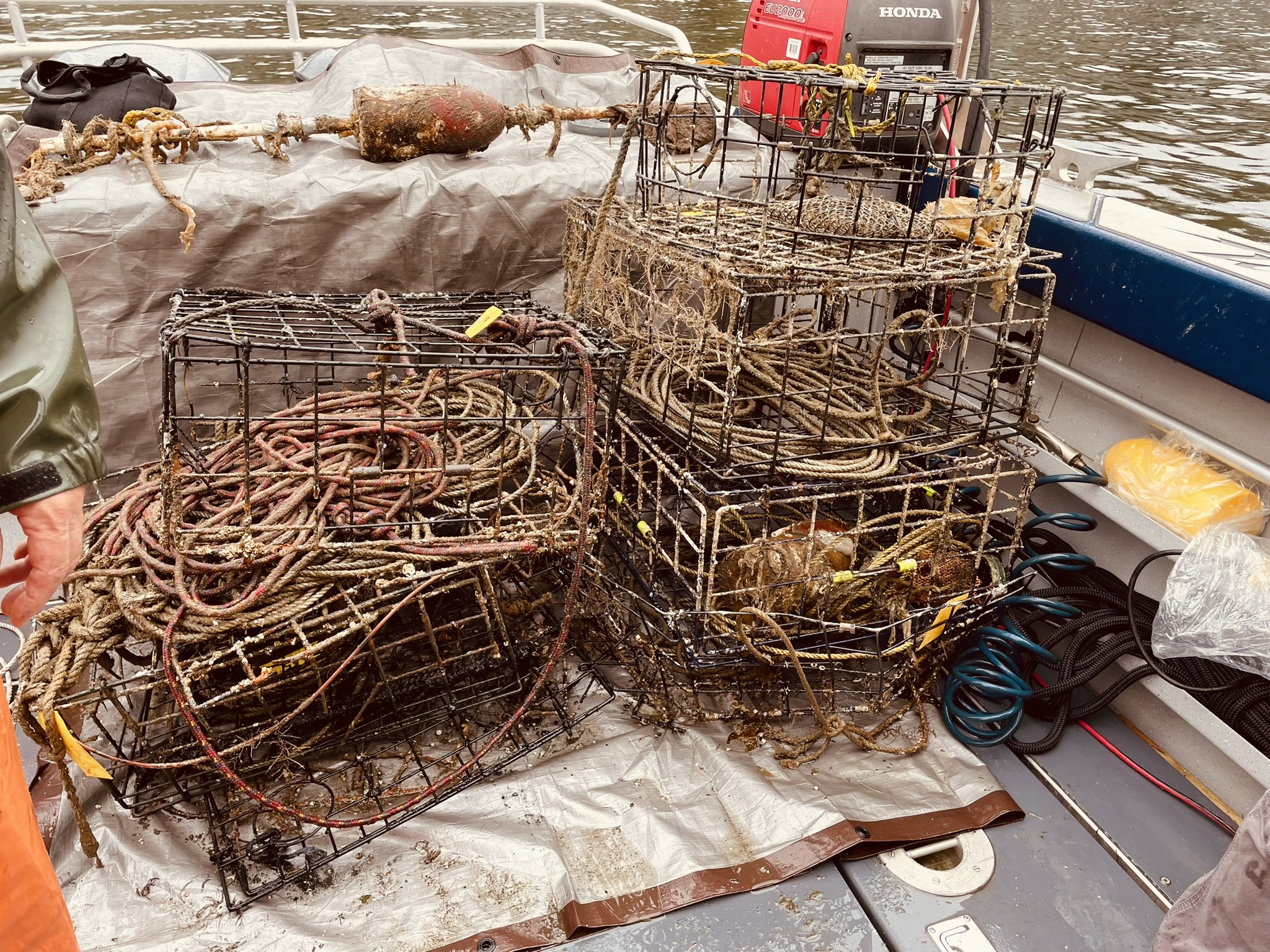
Once pots were removed from the sea floor, they were loaded onto the research vessel and brought back to the docks. Incredible volunteer efforts from the Olympic Peninsula Chapter of Puget Sound Anglers Association helped to sort, clean and break down all the derelict material. Some pots were salvageable and were either returned to the owner if identifiable, or repurposed for education or continued fishing. The remaining unusable pots were broken down into parts and sent to a local recycling facility.
This project finished during the fall of 2024 but has left a lasting impression on the community. One of the big goals of this project was to engage the community in the cleanup of local waters. Bringing in the Anglers Association was invaluable to the volunteer efforts, and also allowed their members to witness first-hand the detrimental impacts of lost fishing gear. The STEM students who participated in the ROV efforts also gained real on-water experience in the marine science and technology field. By engaging the community in multiple levels of this project, the Innerspace Exploration Team hopes to increase public awareness and prevent future lost fishing gear in the Sequim and Discovery bays and throughout Puget Sound.
